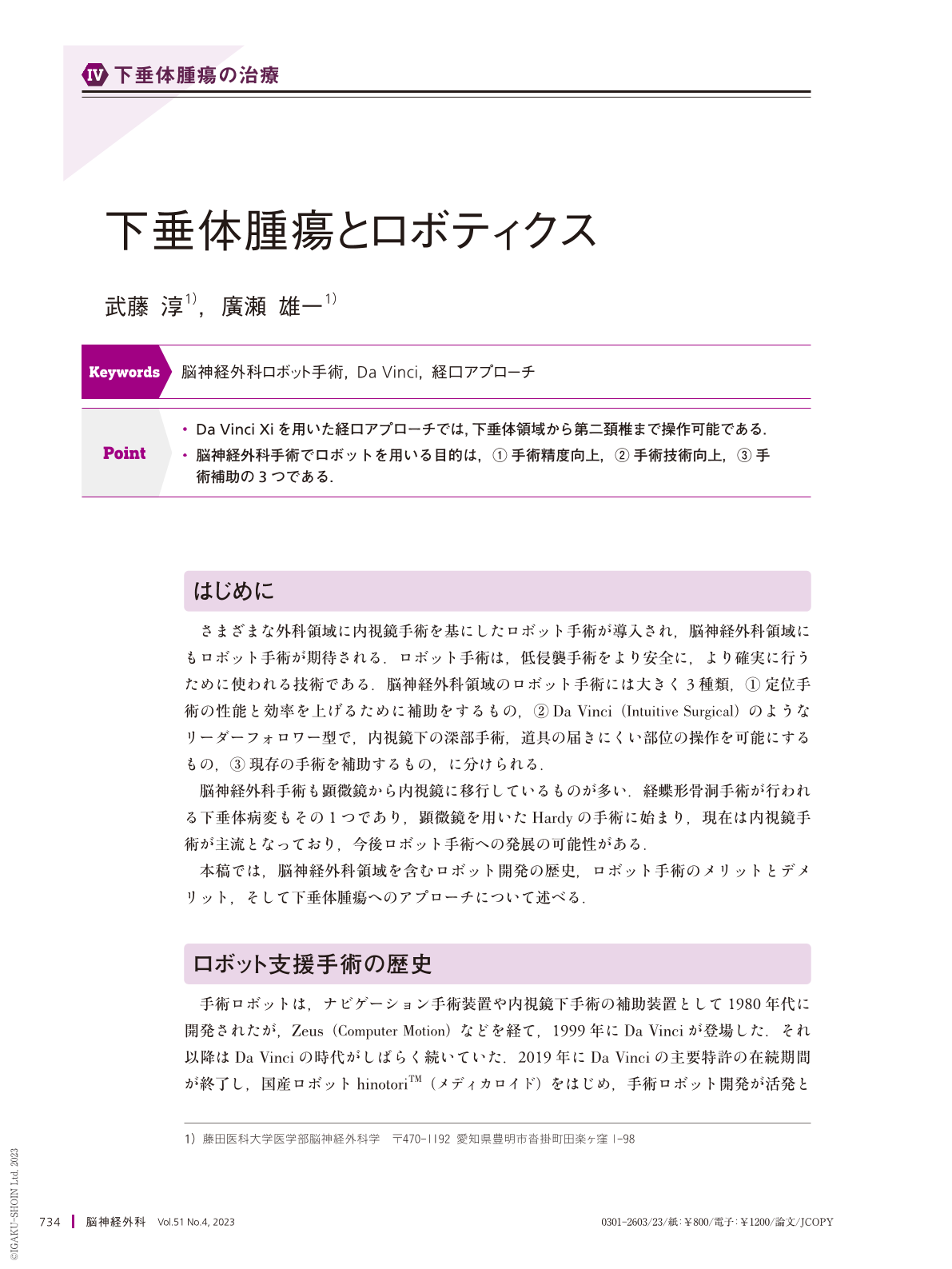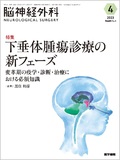Japanese
English
- 有料閲覧
- Abstract 文献概要
- 1ページ目 Look Inside
- 参考文献 Reference
Point
・Da Vinci Xiを用いた経口アプローチでは,下垂体領域から第二頚椎まで操作可能である.
・脳神経外科手術でロボットを用いる目的は,① 手術精度向上,② 手術技術向上,③ 手術補助の3つである.
Robotic surgery has been introduced into various surgical fields and is expected to be useful in neurosurgery. Robotic surgery is a technology used to safely and reliably perform minimally invasive surgeries. There are three main types of robotic surgery in neurosurgery: 1)Aids to improve the performance and efficiency of stereotactic surgery; 2)Leader-follower types, such as Da Vinci and hinotori, which enable operations under endoscopy, surgical maneuvers in deep-seated lesions, and operations in areas that are difficult to reach with tools; and 3)Aids to assist the surgeon.
Many neurosurgical procedures have shifted from microscopy to endoscopy. One such case is pituitary lesions, where transsphenoidal sinus surgery is currently performed. Originally, Hardy's surgery using microscopy was performed, whereas now endoscopic surgery is mainstream, with the possibility of robotic surgery being used in the near future.
This report describes the history of the development of robots, including neurosurgery, the advantages and disadvantages of robotic surgery, and the DaVinci Xi approach to the pituitary gland.

Copyright © 2023, Igaku-Shoin Ltd. All rights reserved.


